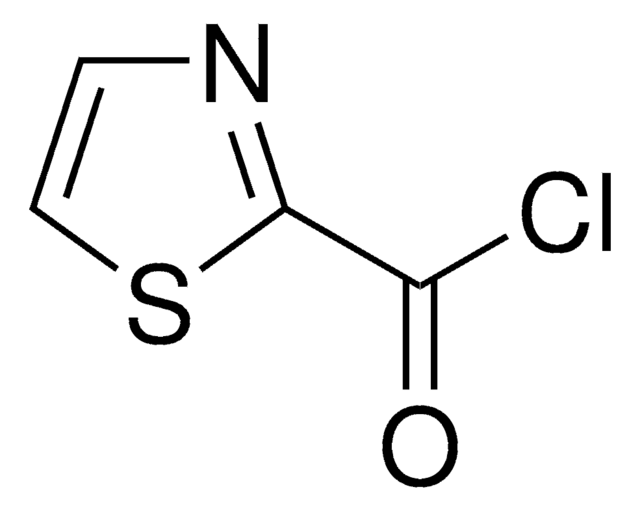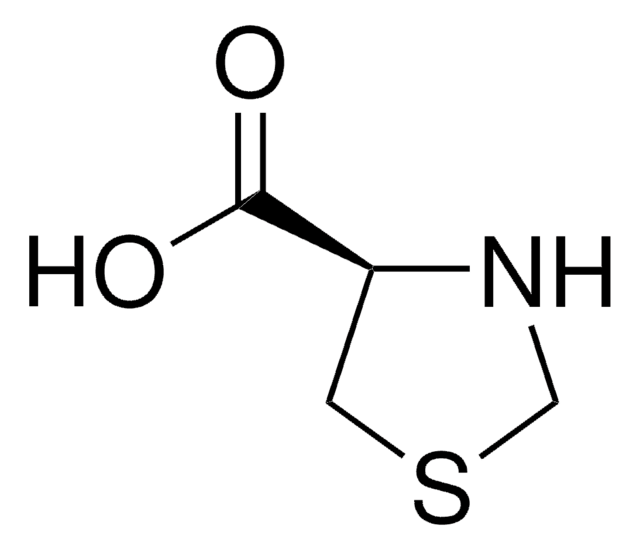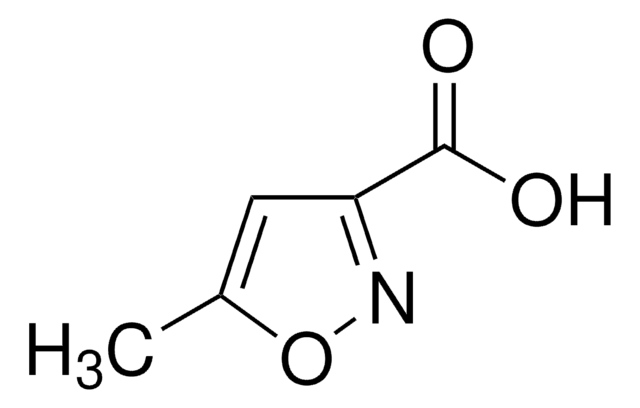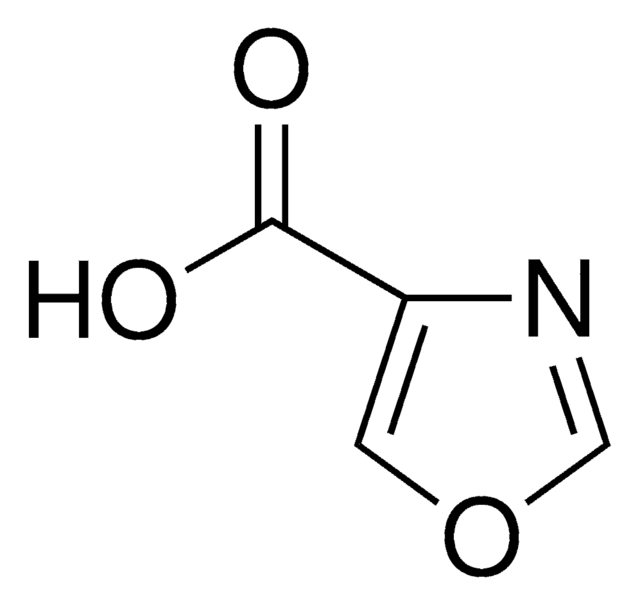Alle Fotos(1)
Wichtige Dokumente
633658
4-Thiazol-Carboxylsäure
97%
Anmeldenzur Ansicht organisationsspezifischer und vertraglich vereinbarter Preise
Alle Fotos(1)
About This Item
Empirische Formel (Hill-System):
C4H3NO2S
CAS-Nummer:
Molekulargewicht:
129.14
MDL-Nummer:
UNSPSC-Code:
12352100
PubChem Substanz-ID:
NACRES:
NA.22
Empfohlene Produkte
Assay
97%
Form
solid
mp (Schmelzpunkt)
195-199 °C (lit.)
Funktionelle Gruppe
carboxylic acid
SMILES String
OC(=O)c1cscn1
InChI
1S/C4H3NO2S/c6-4(7)3-1-8-2-5-3/h1-2H,(H,6,7)
InChIKey
HMVYYTRDXNKRBQ-UHFFFAOYSA-N
Verwandte Kategorien
Hier finden Sie alle aktuellen Versionen:
Besitzen Sie dieses Produkt bereits?
In der Dokumentenbibliothek finden Sie die Dokumentation zu den Produkten, die Sie kürzlich erworben haben.
Chloe Dubreil et al.
Small (Weinheim an der Bergstrasse, Germany), 14(40), e1802053-e1802053 (2018-09-06)
Nanoparticle (NP) administration is among the most attractive approaches to exploit the synergy of different copackaged molecules for the same target. In this work, iron oxide NPs are surface-engineered for the copackaging of the autoantigen proinsulin, a major target of
Angela Rico de Souza et al.
Toxicological sciences : an official journal of the Society of Toxicology, 140(1), 204-223 (2014-04-23)
Cigarette smoke is associated with chronic and enhanced pulmonary inflammation characterized by increased cytokine production and leukocyte recruitment to the lung. Although the aryl hydrocarbon receptor (AhR) is well-known to mediate toxic effects of manmade environmental contaminants, the AhR has
Hideo Satsu et al.
Cytotechnology, 67(4), 621-632 (2014-03-29)
The aryl hydrocarbon receptor (AHR) is a ligand-dependent transcription factor. It heterodimerizes with aryl hydrocarbon nuclear translocator, binds to the xenobiotic-responsive element (XRE), and enhances the transcription of genes encoding xenobiotic metabolizing enzymes. AHR also plays important roles in the
Unser Team von Wissenschaftlern verfügt über Erfahrung in allen Forschungsbereichen einschließlich Life Science, Materialwissenschaften, chemischer Synthese, Chromatographie, Analytik und vielen mehr..
Setzen Sie sich mit dem technischen Dienst in Verbindung.









